
|
Kepler's laws of Planetary Motion:
| Readings: Schneider & Arny: Units 12, 16, 20 |
| (Audio Lecture) |
Kepler developed, using Tycho Brahe's observations, the first kinematic description of orbits, Newton will develop a dynamic description that involves the underlying influence (gravity)

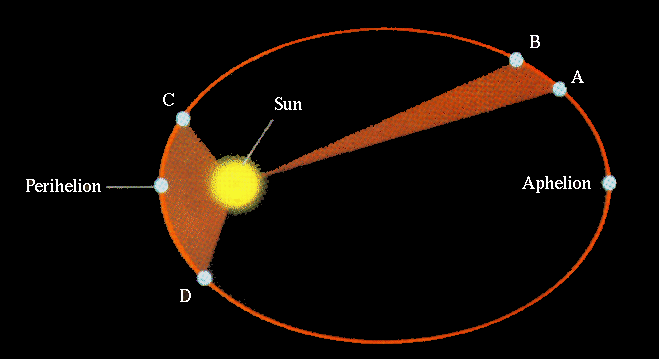
The mathematical way to describe Kepler's 3rd law is:
where the α symbol means `proportional to'. Proportions are expressions that imply there exists some constant, k, that relates the period, P, and the radius, R, such that
We can determine k by expressing the formula in units of the Earth and its orbit around the Sun, such that
so k is equal to one, as long as we use units of years and A.U.'s (the Astronomical Unit, i.e. the distance from the Earth from the Sun). With k=1, then kepler's 3rd law becomes
The 3rd law is used to develop a ``yardstick'' for the Solar System, expressing the distance to all the planets relative to Earth's orbit by just knowing their period (timing how long it takes for them to go around the Sun).
Newton's Law of Universal Gravitation:
Galileo was the first to notice that objects are ``pulled'' towards the center of the Earth, but Newton showed that this same force (gravity) was responsible for the orbits of the planets in the Solar System (this is the famous `falling apple' story).
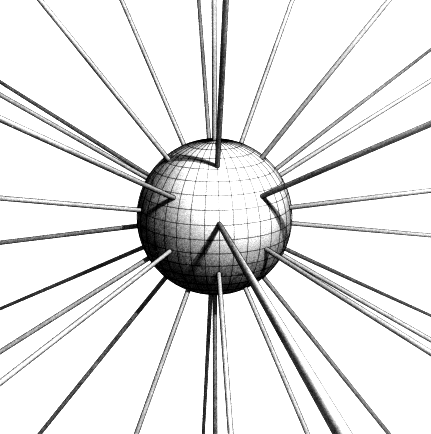
Gravity is a force such that all objects in the Universe attract each other with a force that varies directly as the product of their masses and inversely as the square of their distances.
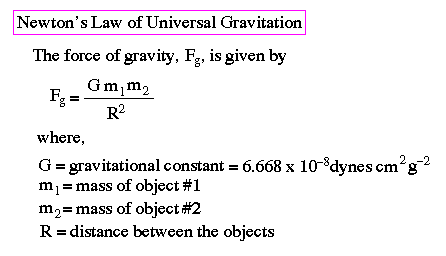
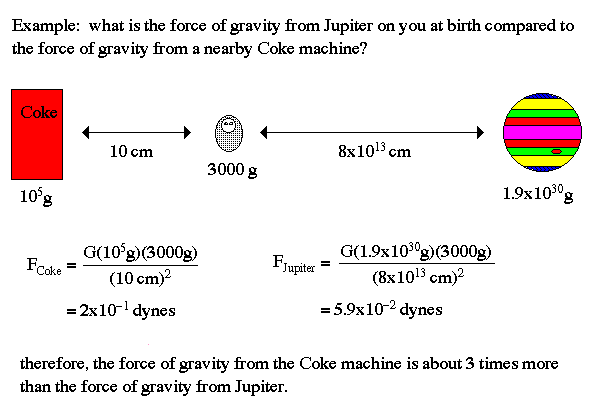
Electromagnetism:
Although conceived of as distinct phenomena until the 19th century, electricity and magnetism are now known to be components of the unified theory of electromagnetism.
The objects effected by electric and magnetic forces are charged particles (positive and negative) and magnetic poles (north and south).
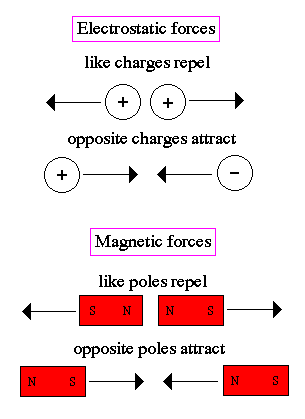
The strength of electric and magnetic forces are given by simple inverse-square laws, just like gravity.
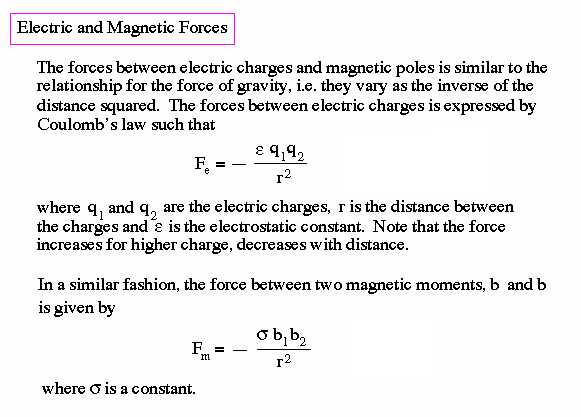
To trace the electric and magnetic forces around charges and magnetic poles, we use the concept of fields. A field can be considered a type of energy in space, or energy with position.

Fundamental Forces :
Matter is affected by forces or interactions (the terms are interchangeable). There are four fundamental forces in the Universe:
The first two you are familiar with from everyday life, gravity is the attractive force between all matter, electromagnetic force describes the interaction of charged particles and magnets (note that your body is build of charged particles called atoms, so when you smack a table you are experiencing electromagnetic forces between the atoms in your hand and the atoms in the table).
The strong and weak force only occur inside the nucleus of atoms. The strong force binds quarks into protons, neutrons and mesons, and holds the nucleus of the atom together despite the repulsive electromagnetic force between protons. The weak force controls the radioactive decay of atomic nuclei and the reactions between leptons (electrons and neutrinos).
Current physics (quantum field theory) explains the exchange of energy in interactions by the use of force carriers, called bosons.
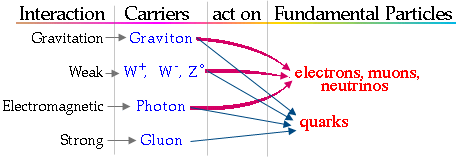

The gravitational and electromagnetic forces are long range, however, only the gravitational forces operates on scales larger than the solar system. The weak and strong forces only operates over distances about the size of atomic nuclei, and are completely ineffective above that scale. So, although the strong force has the greatest strength, it also has the shortest range.
Examples of the consequences of the various forces are: falling objects for gravity, chemical reactions and the properties of light for electromagnetic forces, neutron beta decay for the weak force, and nuclear reactions (fusion/fission) for the strong force.

|
|

|